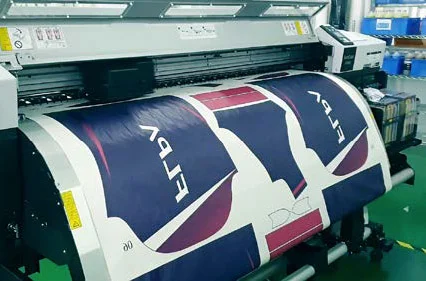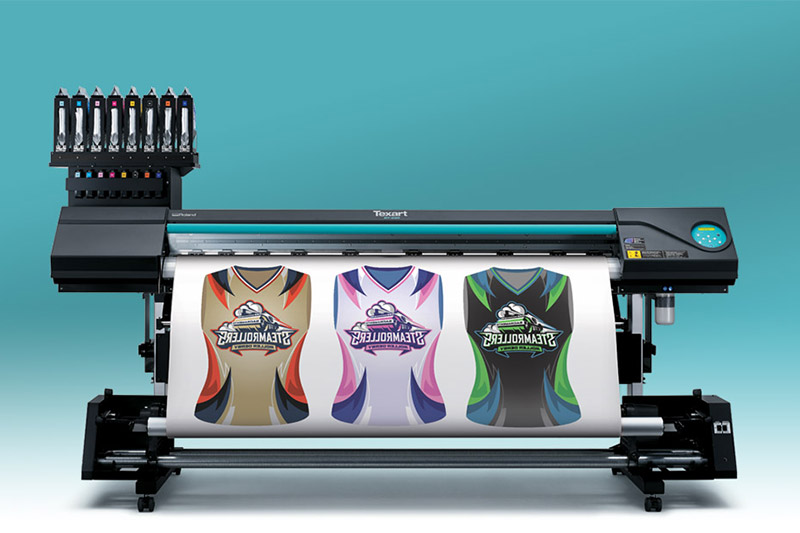From Standard to Digital: Recognizing the Evolution of Fabric Printing
The makeover of fabric printing from traditional approaches like block printing and withstand dyeing to modern methods such as screen and electronic printing marks a considerable change in the textile market. Just how do these innovations affect the significance of fabric printing, and what might the future hold for this ever-evolving craft?
Typical Cloth Printing Techniques
In the very early stages of fabric production, traditional towel printing approaches served as the cornerstone of fabric design, providing both functionality and creative expression. Block printing, one of the oldest methods, included carving intricate designs right into wood blocks, which were after that dipped in color and pressed onto textile.
Resist dyeing, including techniques like batik and tie-dye, employed wax or other materials to avoid dye from permeating specific locations of the fabric. This method produced striking contrasts and elaborate styles, often imbued with social value. Stenciling, an additional typical method, included reducing patterns right into a material and using dye through the openings, offering a less complex yet reliable way to generate repetitive layouts.
These traditional methods not only shaped the fabric industry's very early growth however additionally laid the foundation for future technologies. Each technique mirrored the social and regional features of its beginning, protecting and distributing artisanal understanding with generations.
The Rise of Display Printing
Just how did screen printing transform the landscape of textile style? The development of display printing in the very early 20th century marked a significant separation from standard techniques, providing unmatched convenience and efficiency. This method entails pushing ink with a great mesh screen that has actually been stenciled with a style, enabling high precision and consistency. Screen printing enabled developers to create intricate patterns and vivid colors on textiles, which were previously challenging to attain with block printing or hand-painting methods.
One of the crucial advantages of screen printing is its ability to duplicate complicated designs widespread with amazing integrity. This scalability made it tremendously preferred in the industrial textile market, where automation without compromising high quality is critical. Additionally, display printing suits a variety of dyes and inks, expanding the scheme of structures and surfaces available to developers.
Additionally, the process is very versatile, appropriate for numerous textile kinds including cotton, silk, and synthetics. This flexibility, integrated with its cost-efficiency for large runs, strengthened display printing's duty as a foundation of modern-day textile manufacturing. Hence, the increase of screen printing changed the market, pushing the borders of what was possible in fabric layout.

The Advent of Digital Printing
Building on the impressive developments brought by screen printing, the textile market experienced another groundbreaking growth with the advent of digital printing. Arising in the late 20th century, electronic printing transformed the means styles are moved onto fabrics, using unprecedented flexibility and effectiveness. Unlike typical techniques, which commonly required comprehensive setup and significant hand-operated intervention, digital printing uses computer-aided layout (CAD) innovation to generate detailed patterns directly onto the material with high accuracy.
This innovation has allowed textile producers to satisfy the expanding need for customization and on-demand manufacturing. By getting rid of the need for plates and displays, digital printing minimizes and minimizes lead times product waste, making it a more lasting alternative. The capability to publish complex photos and a vast array of colors in a solitary pass has actually opened up new creative avenues for developers, fostering a surge in creative expression within the market.
Moreover, electronic printing supports smaller sized batch production runs, which is especially helpful for specific niche markets and startup fashion brands. This technical leap has not only boosted operational performance but also democratized accessibility to high-quality textile printing, setting the stage for future advancements in fabric design and manufacturing.
Comparing Techniques: Typical Vs. Digital
While both standard and electronic printing methods have their very own unique advantages, they differ considerably in terms of process, effectiveness, and environmental influence. Traditional cloth printing, incorporating techniques like block printing and display printing, includes hands-on labor and complex workmanship.
In contrast, electronic printing uses advanced technology to move designs directly onto textile using inkjet printers. Digital printing is considerably much faster, allowing for fast turnarounds and just-in-time production, which lowers the demand for huge supply storage.
From an environmental point of view, digital printing is generally extra sustainable. It uses less water and produces marginal waste contrasted to standard methods, which frequently entail extensive cleaning and dyeing procedures. As a result, electronic printing is significantly favored in an era where ecological factors to consider are vital.
Future Trends in Cloth Printing
As the fabric market remains to evolve, future fads in fabric printing frequently direct towards higher assimilation of innovation and sustainability. One considerable pattern is the enhanced application of digital printing modern technologies. These innovations permit higher precision, quicker production times, and the ability to develop intricate styles that were as soon as tough with traditional approaches. Digital fabric printing is anticipated to control the marketplace, driven by its performance and adaptability to customer demands for individualized and limited-edition items.

Additionally, the incorporation of smart fabrics, which integrate digital parts into textiles, is readied to revolutionize the market. These fabrics can supply extra functionalities such as temperature guideline, health monitoring, and interactive functions. As technology remains to development, the junction of digital printing and clever fabrics will certainly open new opportunities for practical and creative applications in cloth printing.
Verdict
The evolution of fabric printing from conventional methods to digital advancements marks a considerable improvement in the screen printing textile industry. While standard strategies highlight artisanal workmanship and cultural heritage, digital printing offers unparalleled accuracy, effectiveness, and modification. This shift not just enhances manufacturing capacities yet additionally sustains sustainability campaigns. Future fads are most likely to proceed incorporating sophisticated technologies, even more redefining fabric layout and production processes to satisfy modern needs and environmental considerations (DTF printing).
The transformation of cloth printing from traditional techniques like block printing and resist dyeing to contemporary methods such as display and electronic printing marks a substantial shift in the textile market. Display printing allowed developers to produce elaborate patterns and vibrant shades on textiles, which were formerly challenging to attain with block printing or hand-painting methods.
Building on the impressive developments brought by display printing, the textile sector experienced one more groundbreaking growth with the arrival of digital printing. heat transfer vinyl printing. Standard fabric printing, encompassing methods like block printing and display printing, involves hand-operated labor and intricate craftsmanship. As technology continues to advance, the crossway of electronic printing and clever fabrics will certainly open brand-new methods for useful and creative applications in fabric printing